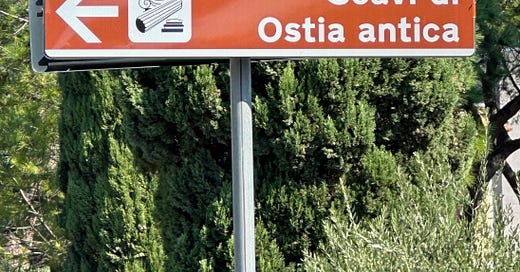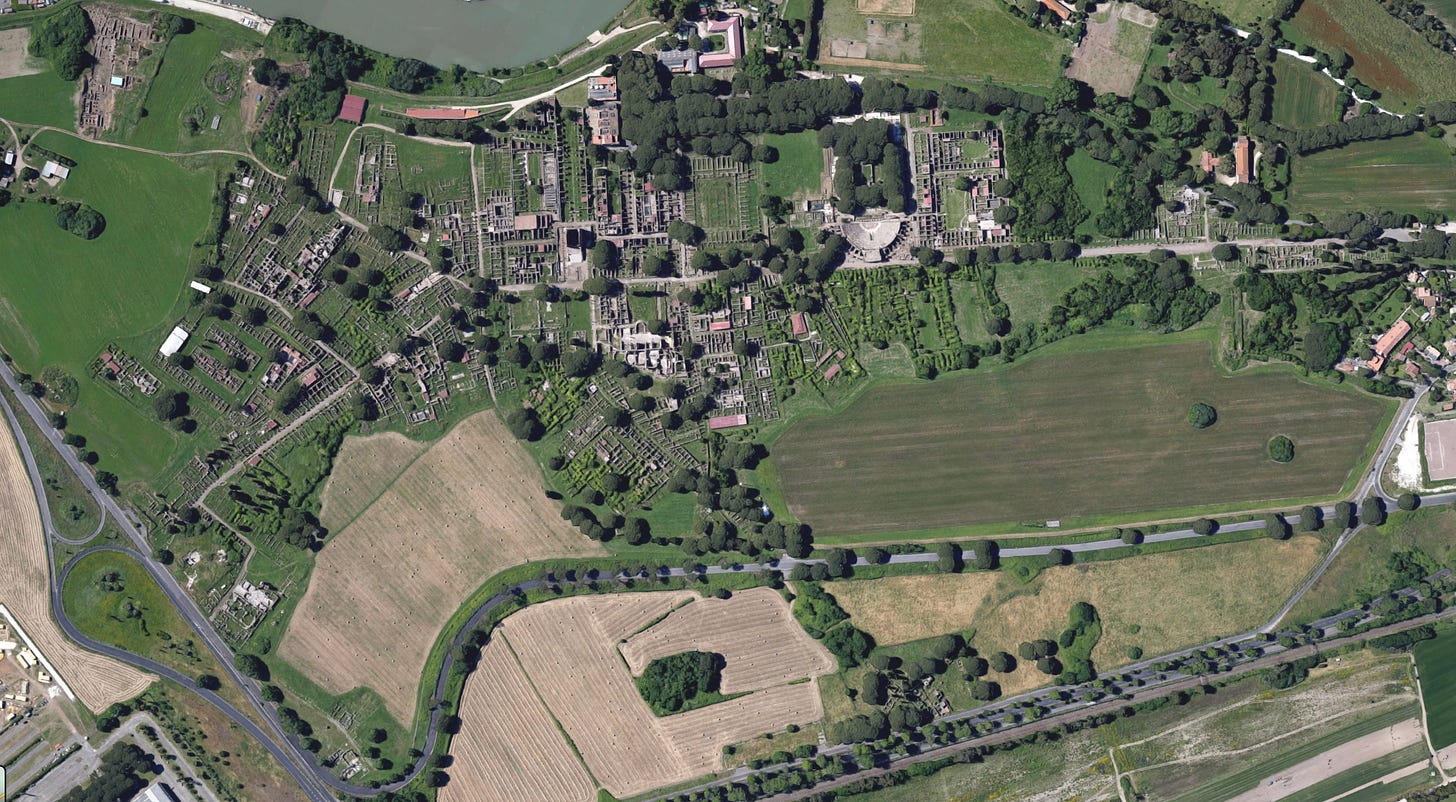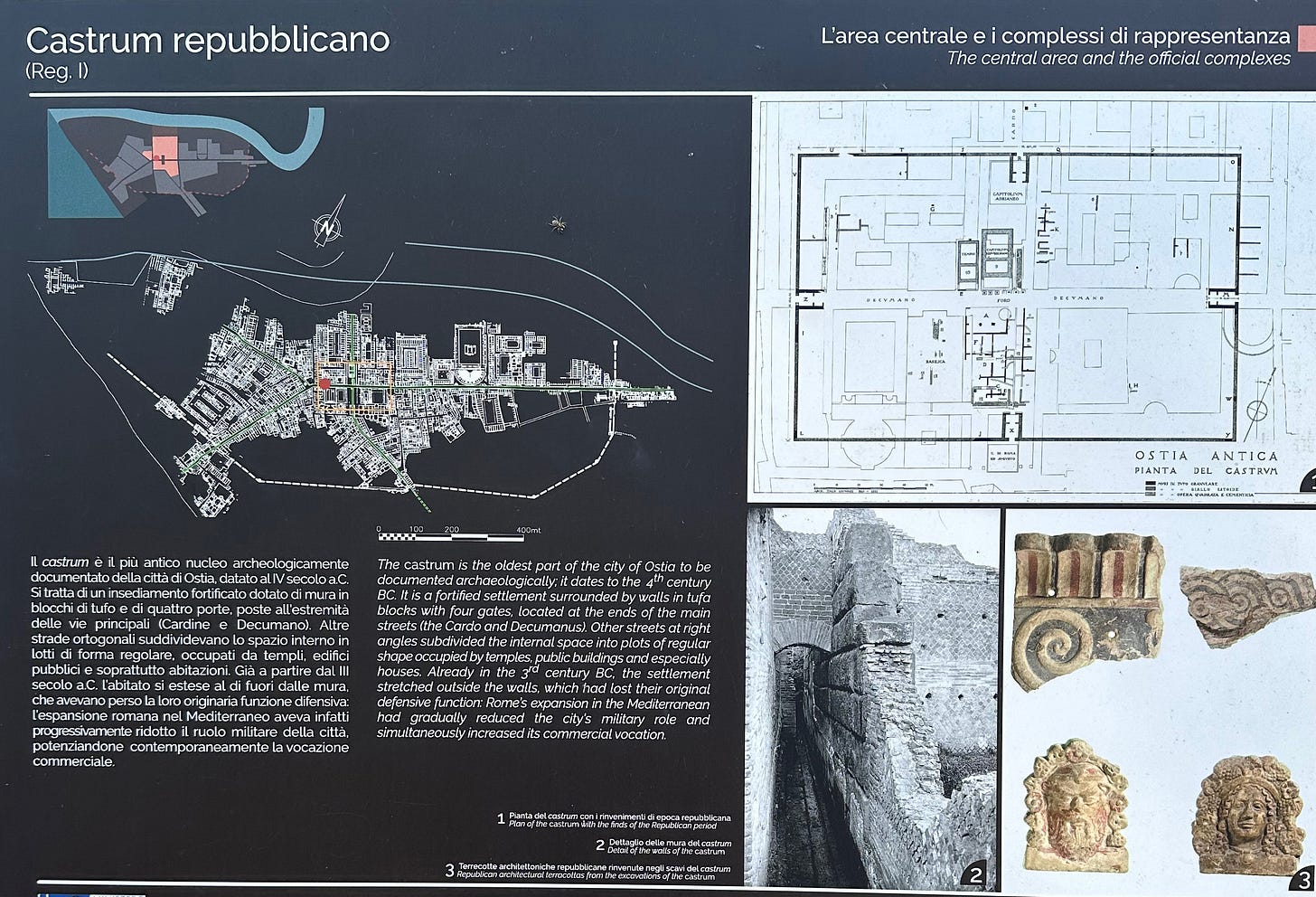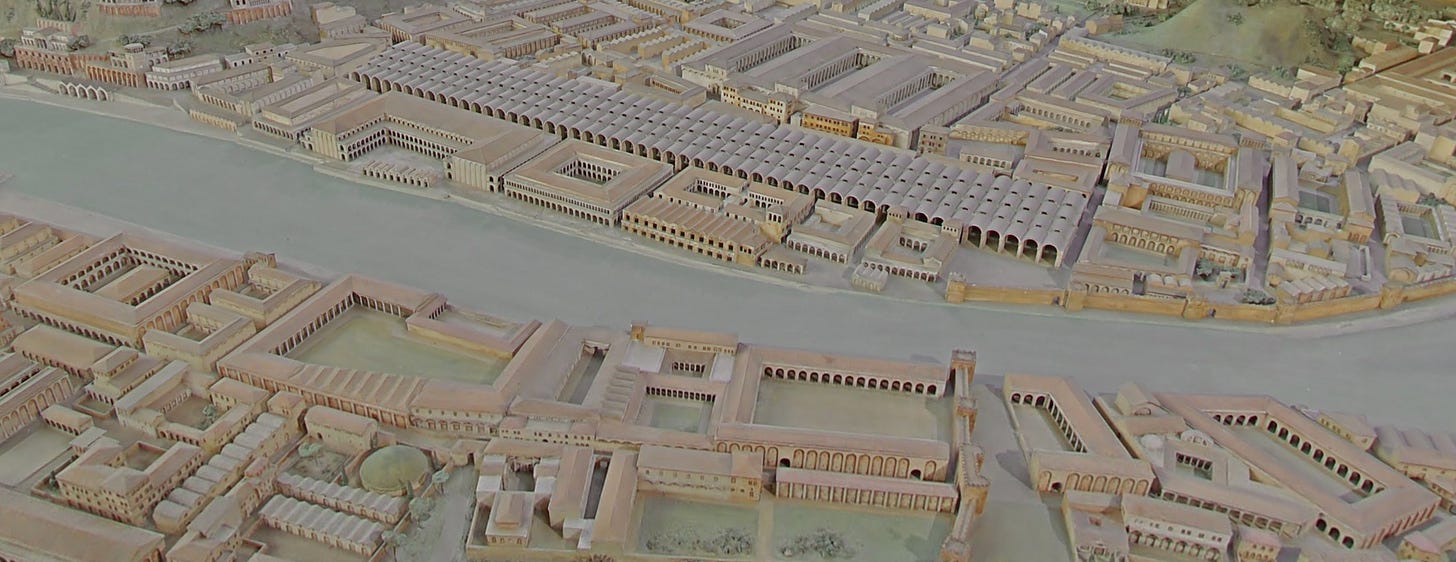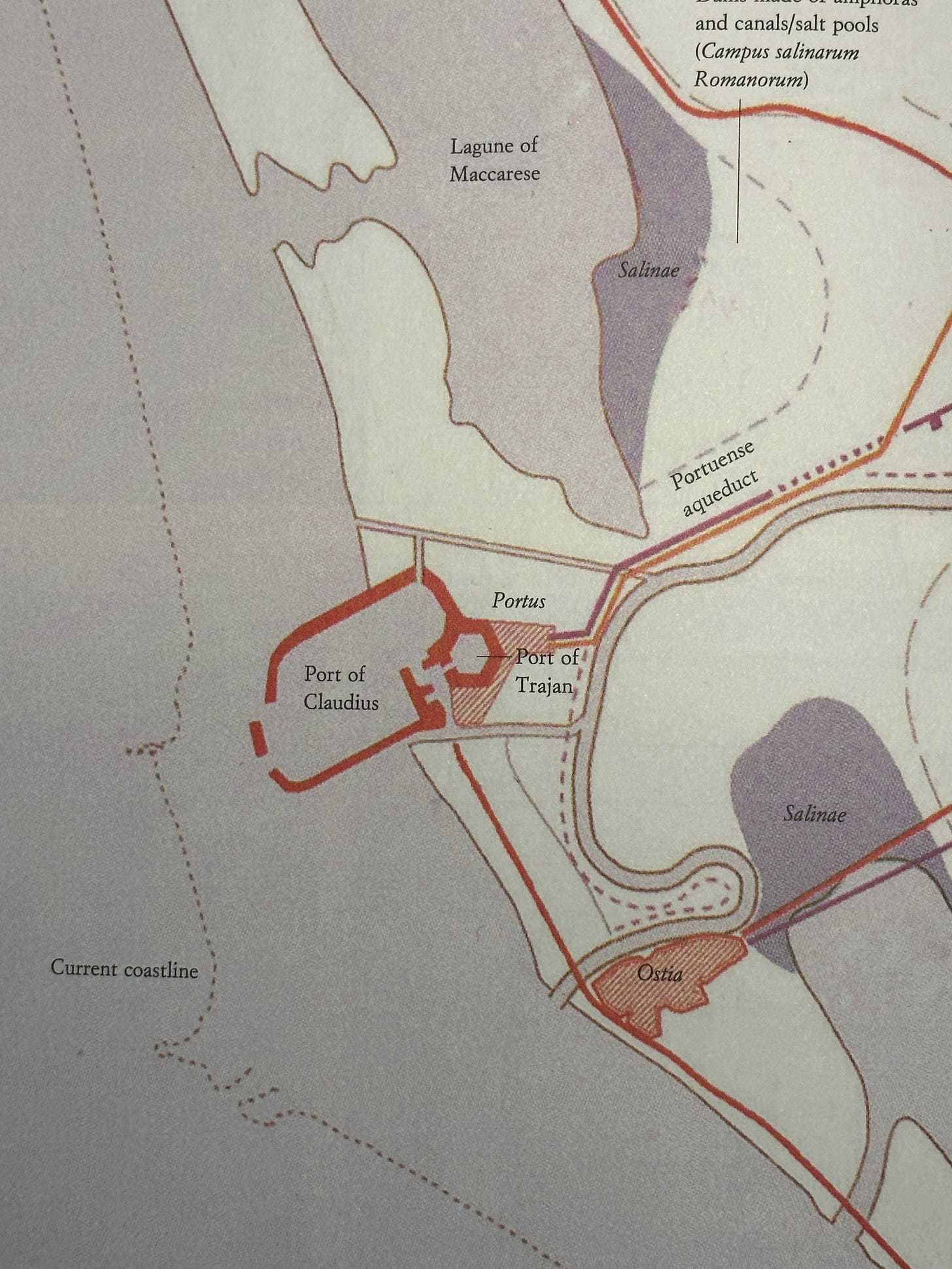Friday, 8 September 2023, DAY 1
Go right to the Ostia Antica — Flickr Album — 325 photos
Before I get to Rome proper, I’m staying near the airport so I can visit the ruins of Ostia Antica. The moment I realized this was so close to the city, I knew I had to go.
Ostia was the principle port city of Rome, the ruins of which were excavated in the early 20th century and are in incredible condition. There are stunning architectural achievements here and a multitude of gorgeous monochrome mosaics throughout.
Google Maps, Ostia Antica
Ostia is touted as the first colony of the Roman empire and began its life as a military exercise against invasions along the Tiber River. The classic military crossroads, the cardus and decumanus form the castrum familiar to many Roman colonies. The crossing of the two streets form the core of most colonies, and that is where the forum is always sited, which includes a public square, one or major pagan temples, and a basilica, among other buildings.
As the empire consolidated power in the Mediterranean basin, Ostia relaxed into becoming a major commercial center feeding the city upriver. Imports and exports were both barged along the Tiber, most often to massive warehousing facilities in the outskirts of Rome, pictured here. There were a lot of mouths to feed, there were a lot of goods to be traded, there were a lot of people who could make a ton of money. Business was good.
Google Maps, the model of ancient Rome at the now defunct Museo della Civiltà Romana, depicting the massive Porticus Aemilia (far side of the river), an engineering marvel and warehousing facility in Rome. Many of the structures on both sides of the river in this area of the model are warehouse businesses fueling the teeming metropolis.
Something surprising to learn is the extent of the difference of today’s coastline from antiquity. Ostia in its heyday, along with the Port of Claudius and the Port of Trajan, was right on the waterfront. Now it sits almost two kilometers from shore; the Port of Claudius is now partially forested.
Carandini, The Atlas of Ancient Rome. The remarkable change in the coastline
I won’t be seeing the Port of Claudius on this trip, or the Port of Trajan, but just compare the scale of the tiny hexagon of the Port of Trajan above on this map juxtaposed against the today’s Fiumicino Airport below. It’s massive. The engineering feats of the Roman Empire were unparalleled until maybe the 19th century. I’m often left speechless.
Google Maps, Fiumicino Airport, The hexagon of the Port of Trajan
The Romans loved their concrete. But unlike today’s concrete, it was not impervious to water and needed to be sealed, at first with a variety of surface stone patterns and eventually with fired brick. Most of the time, this was not considered a proper finish, and a coat of stucco was added to make the building feel “finished,” but it was here in Ostia that brick on its own came to be celebrated as a finish in its own right. It’s everywhere you look, and honestly it’s gorgeous! Very long thin courses that impart a horizontality that unifies the environment and gives the whole town a coherence. Really lovely.
And speaking of, this was no backwards town. Ostia was shockingly advanced. There were multi-story apartment complexes, a kind of office district, many bathing facilities for socializing and leisure, and lavish homes of the wealthy merchant class. Though the Ostia we see developed later than more well known but doomed cities of Pompeii and Herculaneum, there was some true showpiece living happening here.
As for religion, we see the full specturm in the historical record: there are the traditional pagan temples, the Capitolium, the most prominent site dominating the forum, and many other pagan sites, but also several mithraea, shrines to the cult of the Persian god Mithras, a synagogue all on its own out in a quiet corner, and even a late antique Christian basilica with a unique double nave arrangement, columns down the center of the space. This all indicates a segment of the culture that regularly experienced cultural outsiders and had some tolerance for a diversity of beliefs and world views.
It was quite a day. I woke up with a gout attack in my left toe, and I ran around looking for ibuprofen, which you can’t find anywhere except a farmacia, luckily one was open at 8am. So I hobbled around until the ibuprofen kicked in. It always happens when I go on vacation! I forgot to bring my backup battery charger and my phone was on it’s last little bit of juice. I could have taken three more hours of photos, but oh well, now I have something to return to!
For now, ^ here’s an unedited photo album of the trip. I will eventually come back and document these shots in better detail and flesh out more of a narrative with all of this. If anyone knows a better solution for sharing large numbers of files, please let me know. For now, I still think flickr is kind of the best. Not sure why it’s not way more popular.

